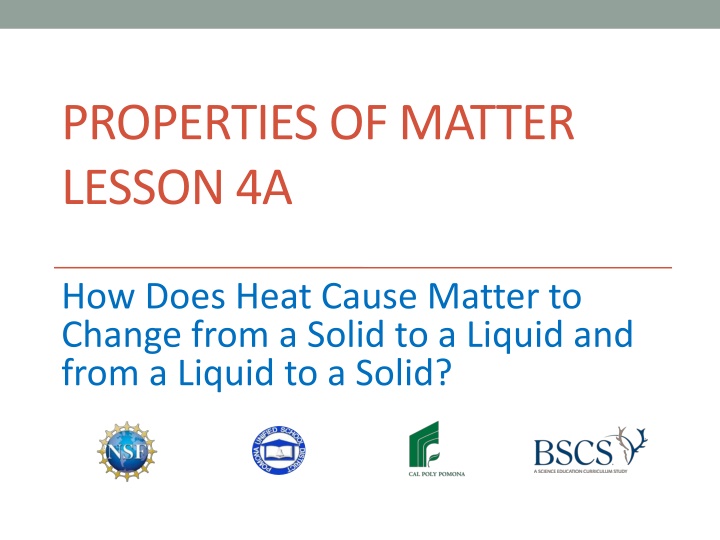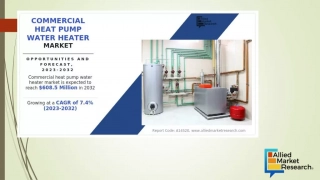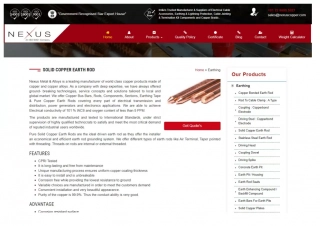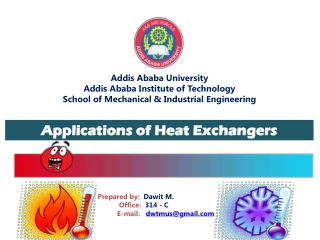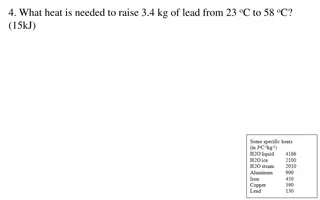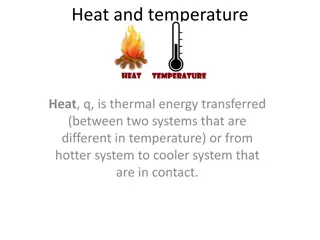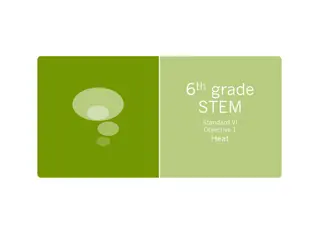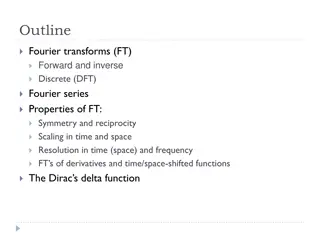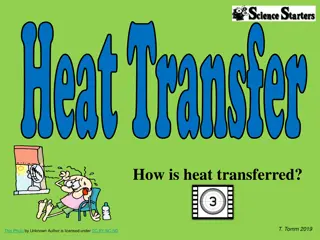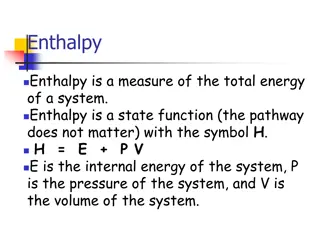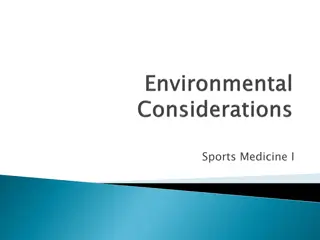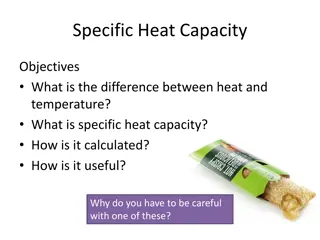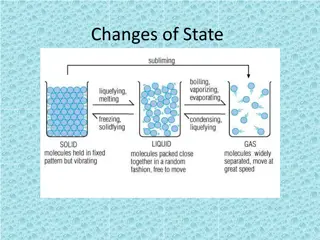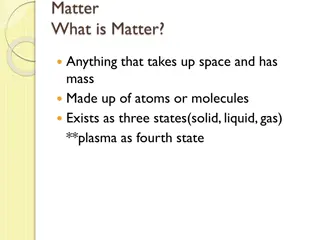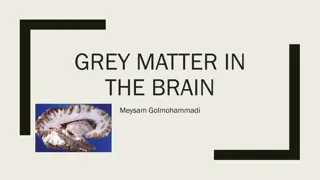How Heat Transforms Matter: Solid to Liquid & Liquid to Solid
Today's focus is on understanding how heat influences the transition of matter between solid and liquid states. Explore the changes in molecular movement in water, represented by Lego models. Discover why scientists use models to study real-world phenomena accurately.
Download Presentation

Please find below an Image/Link to download the presentation.
The content on the website is provided AS IS for your information and personal use only. It may not be sold, licensed, or shared on other websites without obtaining consent from the author.If you encounter any issues during the download, it is possible that the publisher has removed the file from their server.
You are allowed to download the files provided on this website for personal or commercial use, subject to the condition that they are used lawfully. All files are the property of their respective owners.
The content on the website is provided AS IS for your information and personal use only. It may not be sold, licensed, or shared on other websites without obtaining consent from the author.
E N D
Presentation Transcript
PROPERTIES OF MATTER LESSON 4A How Does Heat Cause Matter to Change from a Solid to a Liquid and from a Liquid to a Solid?
Review: Solid Water and Liquid Water Are the molecules in liquid water the same as the molecules in ice cubes (solid water)? Photo courtesy of Derek Jensen/Wikimedia Photo courtesy of BSCS
Review: Solid Water and Liquid Water Do the molecules in liquid water and solid water (ice) move in the same way or in different ways? Photo courtesy of Derek Jensen/Wikimedia Photo courtesy of BSCS
Review: How Solids and Liquids Move In a solid, the molecules can only vibrate in place. In a liquid, the molecules can move around more freely.
Todays Focus Question How does heat cause matter to change from a solid to a liquid and from a liquid to a solid?
Our Lego Model Why do you think we used Lego bricks instead of real water molecules to learn about how matter changes from a solid to a liquid and from a liquid to a solid? Photo courtesy of BSCS
Our Lego Model Water molecules are much too small for us to see! Using a model helped us imagine how these tiny molecules move in a liquid and a solid. Photo courtesy of BSCS
Why Scientists Use Models Scientists uses models because things in real life are too small, too big, too dangerous, or too far away to observe firsthand. Models help scientists learn about things in the real world, just like our Lego model helped us learn about water molecules. When scientists use models, they want the models to show as accurately as possible how things work in real life.
My Lego ModelAnalogy Map Part of the Real World Part of the Model Is/Are Like Because The Lego brick is one small piece, and an atom is one small piece of something. One Lego brick An atom A molecule Two white Lego bricks and one red Lego brick stuck together The molecules in a solid can t move very much, just like the Legos in the box. The Lego bricks in the cardboard box Liquid water Lego bricks jiggling or vibrating in place The molecules in a solid vibrate in place too. Lego bricks moving around freely
How Heat Changes Matter LIQUID Add Heat Remove Heat SOLID
How Adding Heat Changes Matter LIQUID Add Heat SOLID Photos courtesy of BSCS
How Adding Heat Changes Matter Add Heat Solid Water Add Heat Liquid Water Vibrate in Place Add Heat Move Freely Photos courtesy of BSCS
How Removing Heat Changes Matter LIQUID Remove Heat SOLID Photos courtesy of BSCS
Lets Summarize! Our focus question: How does heat cause matter to change from a solid to a liquid and from a liquid to a solid? Using science ideas about matter, work with an elbow partner to write 1 or 2 sentences that answer this question. Word bank: Water molecules Solid/Liquid Add heat Take heat away Vibrate in place Move around freely Move faster Move slower
Next Time Today we learned more about how heat causes matter to change from a solid to a liquid and from a liquid to a solid. Next time, you ll show what you know about how solid and liquid matter change and why!
